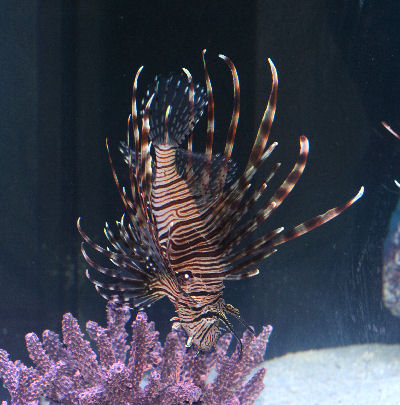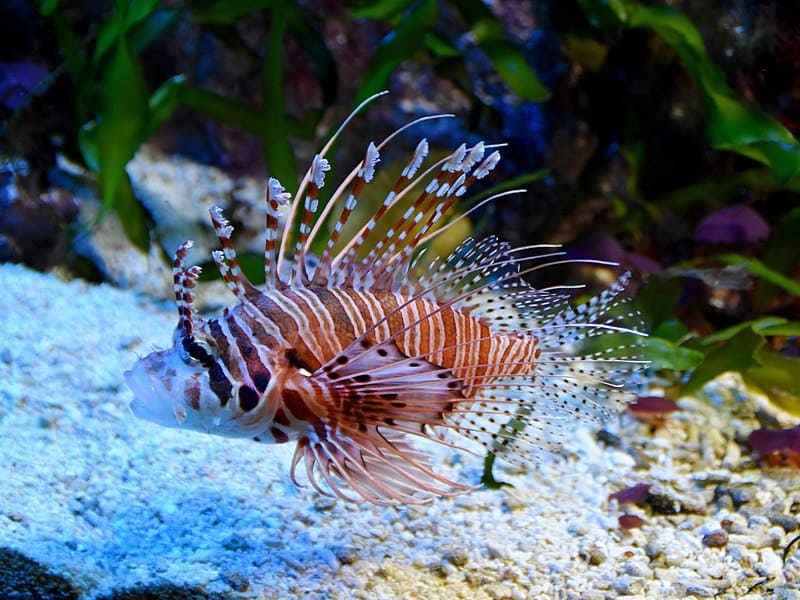
Lionfish are a predatory species that often hunt in what appears to be groups.
A rather lazy fish, they hang montionless at the crest of the reef waiting for dinner to swim to them! In captivity they eat mainly live feeder fish and sometimes frozen lancefish or silversides.
Members of this family have acquired their name ‘Scorpaenidae’ from the poisonous spines in their dorsal fins. The sting can vary in intensity from something like a bee sting to an excruciating pain and sometimes (as in the case of the stonefish) even death.
**Note: If you are stung by a lion fish run hot water over the sting (as hot as you can stand) and consider getting medical attention.
The Lionfish are a nocturnal family of fish that lives in holes and caves in the reef only coming out at night to hunt. There are about 350 different species in 70 genera. Although they are found in all temperate and tropical seas, most are found in the Indo-Pacific.
The two types of lionfish are easily separated:
– Full sized Lionfish belongs to the genera Pterois
– Dwarf Lionfish belonging to the genera Dendrochirus.
For more Information on keeping marine fish see:
Guide to a Happy, Healthy Marine Aquarium
Care and feeding:
Lionfish feed mainly on crustaceans in the wild but also fishes. In captivity these fish will usually only eat live foods initially like guppies or goldfish. Eventually they may take frozen silversides or lancefish. Eating a diet of goldfish and guppies alone may produce a deficiency of proper fatty acids (from Wittenrich, Sea Scope, Summer 1998). So try to get them on a seafood diet as soon as possible.
Lionfish can be kept in a reef situation, but be aware that they will eat crustaceans like crabs and shrimp. They will also put a large biological load on the aquarium since they need to be fed meaty foods regularly.
Breeding:
Breeding of Lionfish has occurred in aquariums; reports of the Shortfin Lionfish, Dendrochilus brachypterus are the most common. See Breeding Marine Fish for specifics.
Scorpaenidae Pterois antennata (Image Credit: NasserHalaweh, Wikimedia Commons CC BY-SA 4.0 International)



